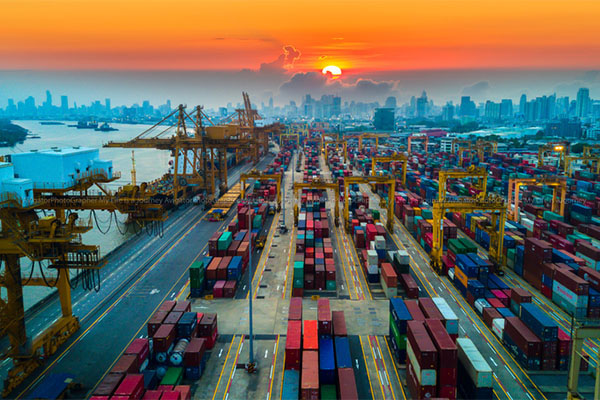POLA, POLB again push back consideration of container dwell fee to August 26

The Port of Los Angeles (POLA) and the Port of Long Beach (POLB) said late last week that they have again postponed the implementation date for their ocean carrier Container Dwell Fee, which will now not be considered for a four-week period, until the August 26.
This follows previous joint announcements by POLA and POLB, whom collectively account for roughly 40% of United States-bound import volumes, indicating that consideration of the fee would be pushed back each week going back to the week of November 22, 2021.
Going back to when the fee was initially rolled out on October 25, 2021, POLA and POLB said that the ports have seen a cumulative 26% decline in the amount of aging cargo on their docks.
In late October, the ports announced they would start assessing surcharges to ocean carriers for import containers dwelling on marine terminals, as part of an effort to clear out the significant backlog at the ports.
Fee implementation has been postponed by both ports since the start of the program. The Long Beach and Los Angeles Boards of Harbor Commissioners have both extended the fee program through October 26.
As previously reported, the ports said that, as per this policy, they will charge ocean carriers for each container falling into two categories:
- for containers scheduled to move by truck, ocean carriers will be charged for every container dwelling nine days or more; and
- for containers moving by rail, ocean carriers will be charged if the container has dwelled for three days or more
POLA and POLB previously said that, effective November 1, 2021, ocean carriers with cargo in either of these categories would be charged $100 per container, which will increase in $100 increments per container per day. The ports said that the fees collected from this initiative will be reinvested for programs to enhance efficiency, accelerate cargo velocity, and also address congestion impacts throughout San Pedro Bay.
These fees were subsequently approved by the Harbor Commissions of both ports on October 29, 2021.
POLA and POLB officials said that prior to the mid-2020 pandemic-driven run-up in imports, containers for local delivery, on average, were on container terminals for less than four days, with containers destined for trains dwelled for less than two days.
They added that any fees collected from dwelling cargo will be reinvested for programs designed to enhance efficiency, accelerate cargo velocity, and address congestion impacts.
On a recent media conference call, POLA Executive Director Gene Seroka said that the port is going to keep every tool in its kit possible to make sure it leverages and gets cargo where it needs to go.
“If the fee needs to be there for consideration, it will remain, but different than we were at back in October are a couple of key statistics. The total volume of import cargo that is sitting on our dock is about 25% less than when we were gridlocked in the fourth quarter last year. Secondly, the rail cargo that is sitting nine days or longer now makes up 75% of all that aging cargo, which is why I advocated to kick it into gear and get this problem solved, because all of the other points that we measure are in very good shape. We are still not at maximum capacity on our terminals, although there takes a little bit more of movement, those phantom moves to get to the box you want to either load on truck or rail. We have got to improve those efficiencies.”
Seroka added that the current outlook does not mirror what he called the “dire straits” that were intact ahead of the 2021 holiday season, while there is still more work to do.

Article Topics
3PL News & Resources
LM Podcast Series: Assessing the freight transportation and logistics markets with Tom Nightingale, AFS Logistics Investor expectations continue to influence supply chain decision-making XPO opens up three new services acquired through auction of Yellow’s properties and assets FTR’s Trucking Conditions Index weakens, due to fuel price gains LM Podcast Series: Examining the freight railroad and intermodal markets with Tony Hatch Supply Chain Stability Index sees ‘Tremendous Improvement’ in 2023 TD Cowen/AFS Freight presents mixed readings for parcel, LTL, and truckload revenues and rates More 3PLLatest in Logistics
LM Podcast Series: Assessing the freight transportation and logistics markets with Tom Nightingale, AFS Logistics Investor expectations continue to influence supply chain decision-making The Next Big Steps in Supply Chain Digitalization Warehouse/DC Automation & Technology: Time to gain a competitive advantage The Ultimate WMS Checklist: Find the Perfect Fit Under-21 driver pilot program a bust with fleets as FMCSA seeks changes Diesel back over $4 a gallon; Mideast tensions, other worries cited More LogisticsAbout the Author
Subscribe to Logistics Management Magazine

Find out what the world's most innovative companies are doing to improve productivity in their plants and distribution centers.
Start your FREE subscription today.
April 2023 Logistics Management

Latest Resources














